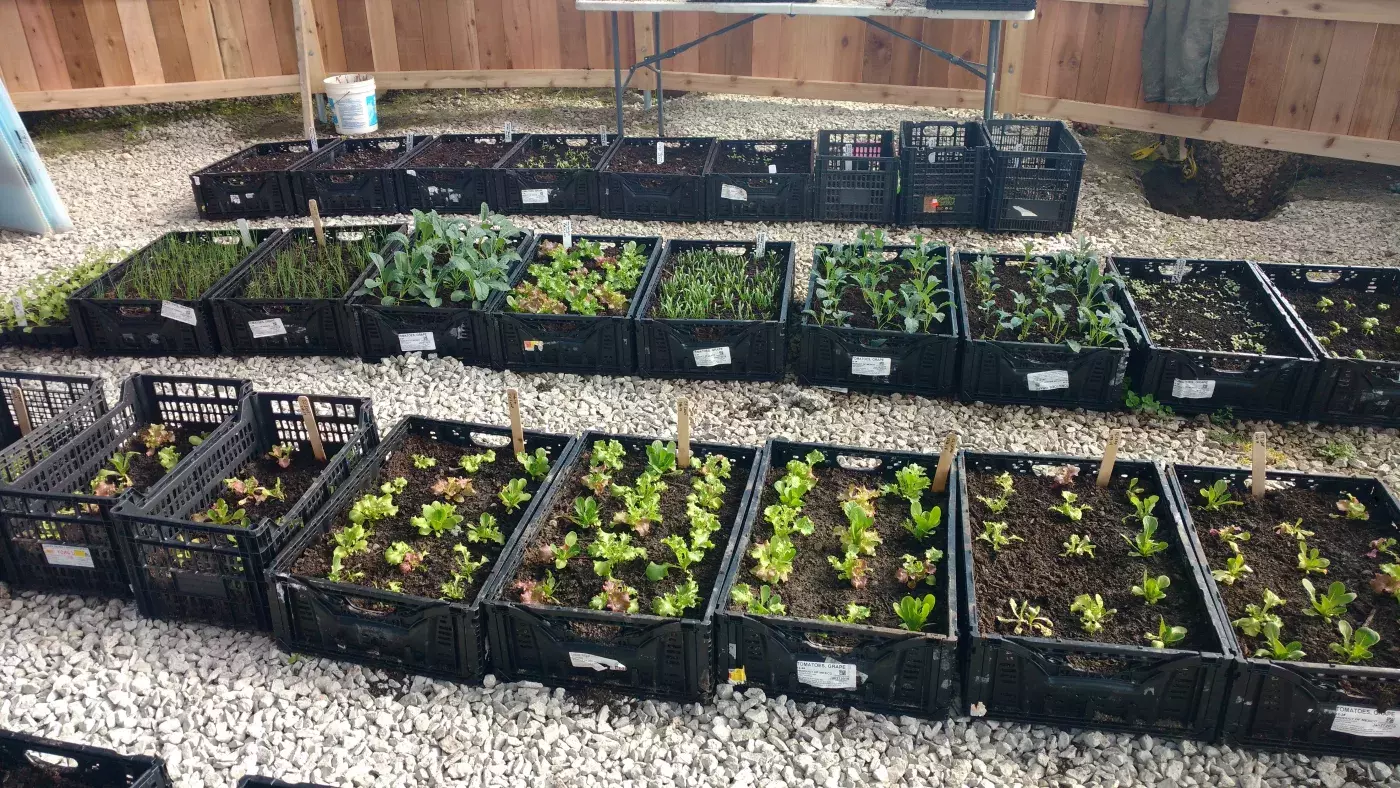

Sustainable Agriculture Student Research Project
Leaf mold as renewable alternative to peat in seed starting mediaRosina Rodighiero, Department of Sustainable Agriculture and Food Systems, 2019 |
|
Introduction
- Peatlands store 30% of the world’s terrestrial carbon, equivalent to 75% of all carbon in the atmosphere.
- Draining peatlands for mining changes vegetation cover, erodes biodiversity, lowers water quality, increases the frequency of fires, and causes land subsidence.
- Mining and use of peat releases sequestered carbon into the atmosphere, contributing to climate change.
- Most mined peat is used for agriculture. It is often the largest component of horticultural potting mixes and seed starting media. Peat use is increasing.
- High-quality, low-cost alternatives to peat are needed for more sustainable containerized growing media.
- Leaf mold is a low-cost, locally available, and renewable alternative substrate with similar physical properties to peat. Used alone or in combination with other materials, leaf mold could serve as a renewable alternative to peat in seed starting media
Objectives
- Assess the suitability of leaf mold as an alternative to peat in growing media for organic transplant production.
Methods
- The experiment was conducted in the passive solar geodesic dome on KPU’s Research and Teaching Farm on the Garden City Lands, in Richmond, BC.
Image
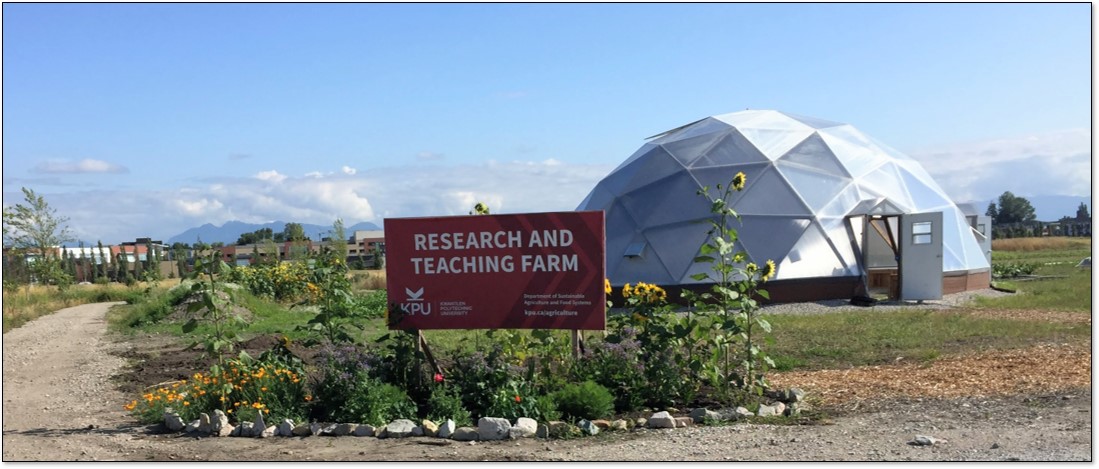
Figure 1. The study was conducted in the geodesic dome solar greenhouse at KPU's Research and Teaching Farm on the Garden City Lands.
- Experimental Design: Completely randomized full factorial design with two replicates and 36 treatments, consisting of 72 475 cm3 cells.
Image
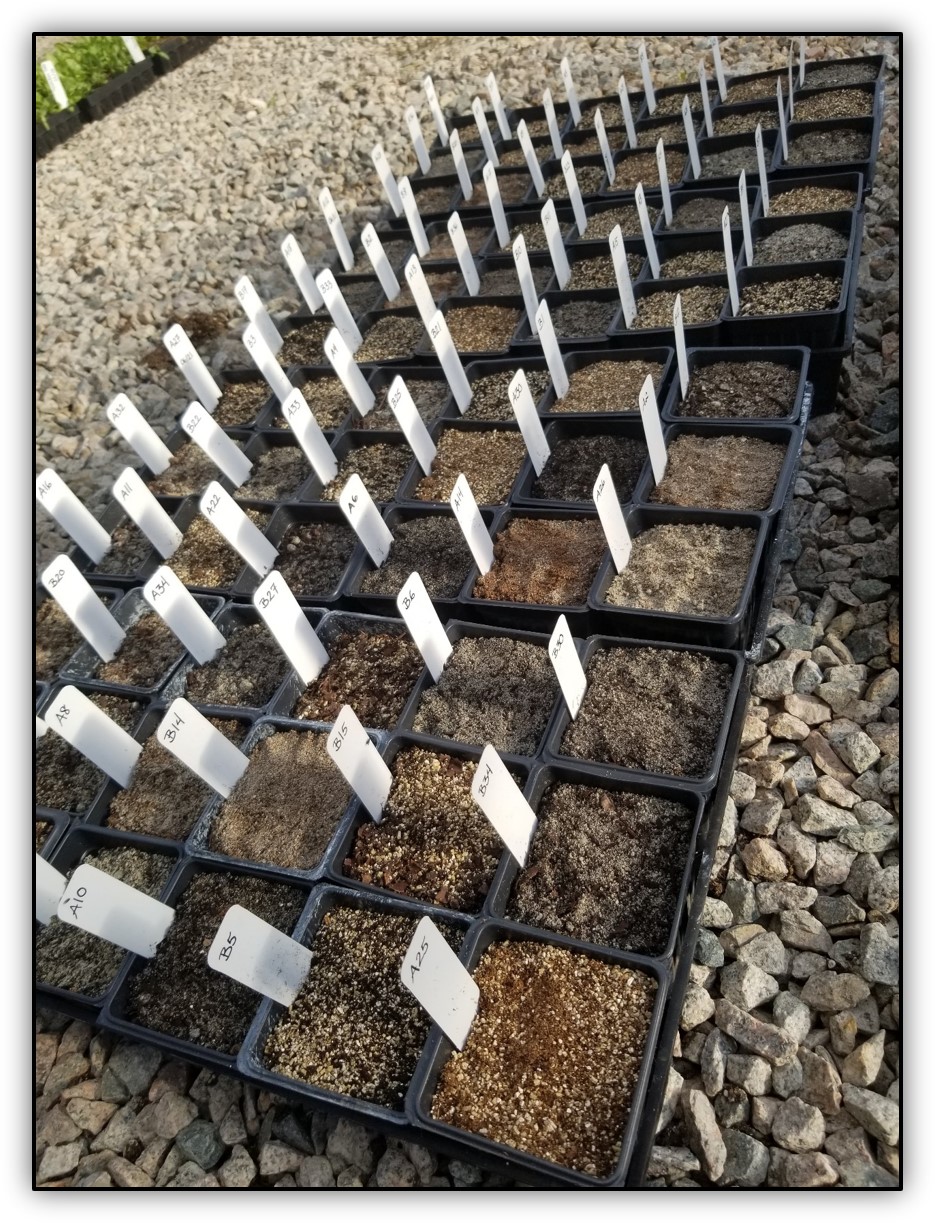
Figure 2. Completely randomized design with 36 soil mix treatments in four 18-cell trays.
- Each treatment consisted of a growing medium, a loosening agent, and a crop, with all possible combinations of six growing media, two loosening agents, and three crops tested.
- Growing medium
- Peat (Sun Gro Black Gold, Agawarm MA)
- Leaf mold (homemade, Richmond BC)
- Compost (Hop, Vancouver BC)
- Leaf mold/Compost (1:1)
- Peat/Compost (1:1)
- Peat/Leaf mold (1:1)
- Loosening agent
- Sand (Lawnboy Enterprises, Vancouver BC)
- Vermiculite
- Crop
- Kale (cv. Lacinato, West Coast Seeds, Vancouver BC)
- Lettuce (cv. Aerostar, West Coast Seeds, Vancouver BC)
- Zinnea (cv. Grian Blue Point, West Coast Seeds, Vancouver BC)
- Growing medium
- A germination test was performed with radish seeds to verify compost maturity before starting the experiment.
-
Leaf mold and peat were pre-mixed with nutrient amendments to achieve an equivalent comparison between treatments and ensure that any differences were not simply due to pH or nutrient deficiency (Table 1).
| Ingredient | Amount (g/l) |
|---|---|
| Lime | 2.8 |
| Blood meal | 2.5 |
| Kelp meal | 7.5 |
| Bone meal | 3.9 |
| Guano | 1.9 |
| Total | 18.5 |
- Kale (Lacinato), lettuce (Aerostar), and zinnia (Giant Blue Point) were seeded in 18-cell flats on June 21. Leaf area was estimated weekly by randomly selecting and measuring the length and width of four leaves from each plant. The mean of the estimated leaf area values were recorded and compared.
Image
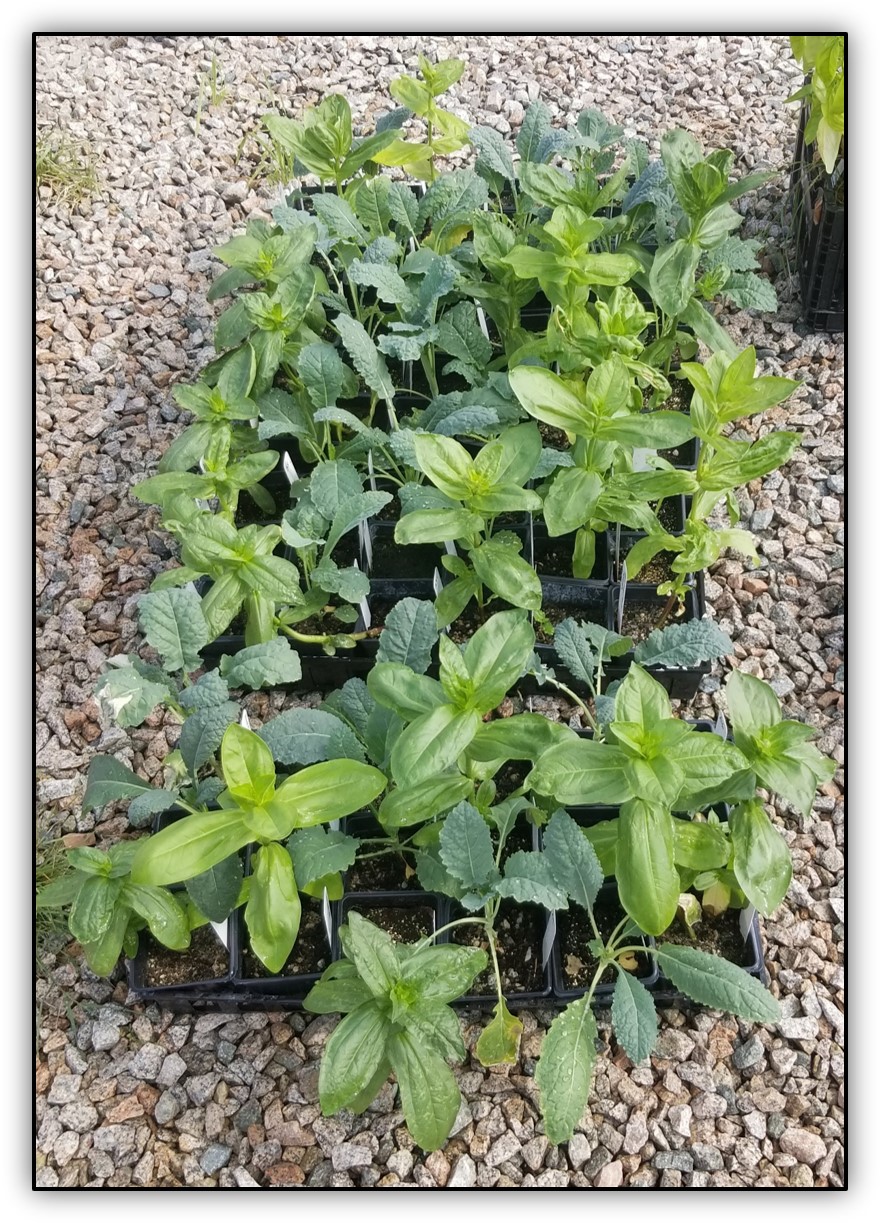
Figure 3. Kale (Brassica oleracea) and zinnia (Zinnia elegans) seedlings after five weeks of growth.
- Kale and zinnia were harvested on July 29, 2019. Plants were oven-dried at 60 °C in an air-forced oven for 72 hours. Dry weights were recorded and root:shoot ratios were calculated.
- No data were collected from lettuce plants as they failed to germinate. Thus, the experiment was analyzed with 24 treatment combinations.
- All data were tested for normality using the Shapiro-Wilk Test. Dried biomass and root:shoot ratio data were analyzed by ANOVA. Leaf area data were analyzed using a Linear Mixed Model test with week, medium, and loosener as fixed effects and crop as a random effect. All analyses were conducted using the jamovi (v. 1.0.8.0) interface for R statistical software. Tukey’s Honestly Significant Difference test and the Bonferroni test were used to compare differences between treatments (α = 0.05).
Results
- Leaf area was greater in leaf mold/compost (Fig. 4D) and peat/compost (Fig. 4F) blends than in pure compost (Fig. 4C). An interaction was observed between growing medium and loosening agent. The leaf mold/compost blend with vermiculite produced greater leaf area than the same blend with sand (Fig. 4D), pure leaf mold with vermiculite (Fig. 4A), or pure compost with either loosening agent (Fig. 4C).
- Medium had no significant effect on root:shoot ratios. Total dry weight only differed by crop, not by medium. Total dry weight for zinnias was significantly higher than the total dry weight for kale at the end of the experiment.
Image
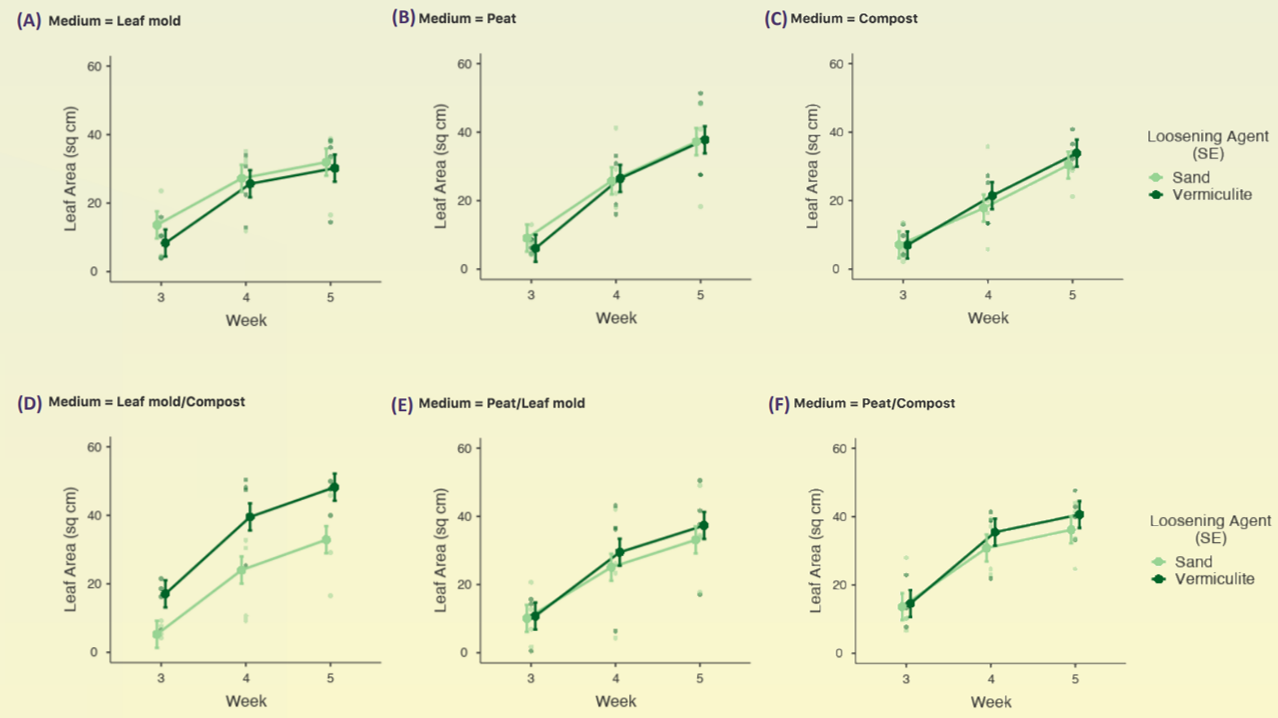
Figure 4. Leaf area growth over time in growing media with two different loosening agents.
Conclusion
- Total dry weight (biomass) was not affected by soil medium.
- Root:shoot ratio was not affected by soil media.
- Maximum leaf growth occurred with an equal mix of leaf mold and compost media with vermiculite as the loosening agent.
- Leaf mold on its own cannot replace peat as a substrate, but, in combination with compost, it can substitute for peat in seed starting media for vegetable and flower production. This combination can reduce our dependence on peat for transplant production and provide a locally-available, renewable, and low-cost alternative to peat for small-scale farmers and gardeners.
- Further experiments should investigate different ratios of compost, loosening agents, and amendments combined with leaf mold on a wider selection of crops to determine optimal mixes for transplant growth.
Acknowledgments
- Thanks to Mike Bomford and Rebecca Harbut for their guidance and expertise throughout this project. Thanks to Andy Smith and the KPU farm crew for technical assistance and watering the transplants. Thanks to my partner, Dylan, for building a compost sifter and for helping me to clean and measure the plant biomass samples.